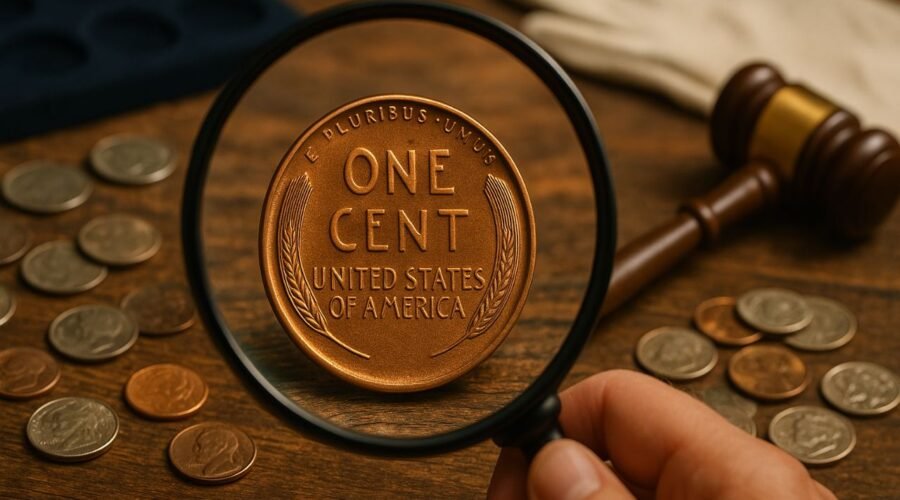The Lincoln Wheat Penny Valued At $95K- Could This Rare Coin Be In Your Change?
Not all cents are equal. A handful of Lincoln Wheat Pennies command huge prices because of low mintages, rare mint errors, and top-tier condition.
When intense collector demand meets true scarcity, values can skyrocket to $95,000 and beyond—especially for coins graded Mint State (MS) with bright Red (RD) luster.
Key Value Drivers To Know
- Low Mintage Numbers: Fewer coins struck means fewer survivors. Key years and mint marks can be scarce even in lower grades.
- Major Mint Errors: Dramatic mistakes—like wrong-metal planchets or doubled dies—are coveted and rare.
- High-Grade Condition: Uncirculated MS-graded wheat cents with full red color bring exponential premiums.
- Collector Demand: The Lincoln cent is America’s most collected series, which intensifies competition for the best coins.
Most Valuable Wheat Pennies To Look For
Below are classic keys and headline-making errors that can be worth thousands in the right condition.
| Coin | What Makes It Special | Potential Value In Top Condition |
|---|---|---|
| 1909-S VDB | First year; scarce San Francisco mint with designer’s initials VDB on reverse | $60,000 – $100,000+ |
| 1914-D | Extremely low mintage from Denver; tough in high grade | $50,000 – $95,000 |
| 1922 “No D” | Die filled or missing D mint mark; rare variety from Denver | $20,000 – $75,000 |
| 1943 Bronze Cent | Wrong-metal error (should be steel); “holy grail” rarity | $150,000 – $1,000,000 |
| 1944 Steel Cent | Wrong-metal error (should be bronze); dramatic and scarce | $50,000 – $180,000 |
| 1955 Doubled Die | Bold doubling on date and lettering; famous variety | $10,000 – $50,000+ |
Tip: Values above assume authenticity and elite grades. Prices for circulated coins are lower, but key dates and dramatic errors can still be worth serious money.
How To Check Your Change For Winners
- Look At The Date And Mint Mark: Zero in on 1909-S VDB, 1914-D, 1922 No D, and wartime 1943–1944 dates.
- Use A Magnet: A genuine 1943 steel cent will stick; a 1943 bronze/copper error won’t—a red-flag for a valuable coin.
- Check For Doubling: On the 1955 Doubled Die, you’ll see strong doubling in LIBERTY, IN GOD WE TRUST, and the date.
- Examine Condition: Full mint luster, minimal marks, and original red color point to higher grades (and higher value).
- Get Professional Grading: Third-party services like PCGS or NGC confirm authenticity, assign an official grade, and protect the coin.
Real Auction Highlights To Inspire You
- A 1909-S VDB in superb Red mint state has crossed $100,000 at auction.
- A 1944 Steel Cent has realized over $180,000.
- The legendary 1943 Bronze Cent has sold for hundreds of thousands to over a million dollars.
These results show how a one-cent piece can become a life-changing find when rarity, condition, and demand align.
Common Mistakes To Avoid
- Cleaning Your Coin: Harsh cleaning destroys value. Leave surfaces original.
- Relying On Photos Alone: Counterfeits exist. Use in-hand inspection and professional authentication.
- Ignoring Minor Details: The mint mark shape, position, and tiny die markers often separate fakes from the real thing.
Smart Next Steps If You Think You Found One
- Handle Carefully: Hold by the edges; avoid touching the faces.
- Do A Quick Magnet Test: Especially for 1943 and 1944 coins.
- Compare Trusted Diagnostics: Look up key diagnostics for your date/variety.
- Seek A Reputable Dealer: Get a pre-screen before submitting for grading.
- Submit For Certification: PCGS/NGC grading maximizes resale confidence and price.
The Lincoln Wheat Penny proves small coins can hide huge value. While most pieces are common, key dates like 1909-S VDB and 1914-D, plus dramatic errors such as the 1943 Bronze and 1944 Steel, can reach $95,000—and sometimes far more.
Check dates and mint marks, watch for error clues, protect the coin’s condition, and use professional grading to unlock its full potential.
Your next life-changing coin could be sitting in your spare change.
FAQs
Can A Regular-Looking Penny Really Be Worth $95,000?
Yes. High-grade 1909-S VDB and 1914-D cents can approach or exceed $95,000, and dramatic errors can sell for far more.
How Do I Know If My Penny Is A Rare Error?
Look for wrong metal, missing mint marks (e.g., 1922 No D), or strong doubling (e.g., 1955 Doubled Die). If it looks promising, get it authenticated.
Are All Lincoln Wheat Pennies Valuable?
No. Most are worth only a few cents to a few dollars. Value concentrates in key dates, major errors, and high-grade examples.


Leave a Reply